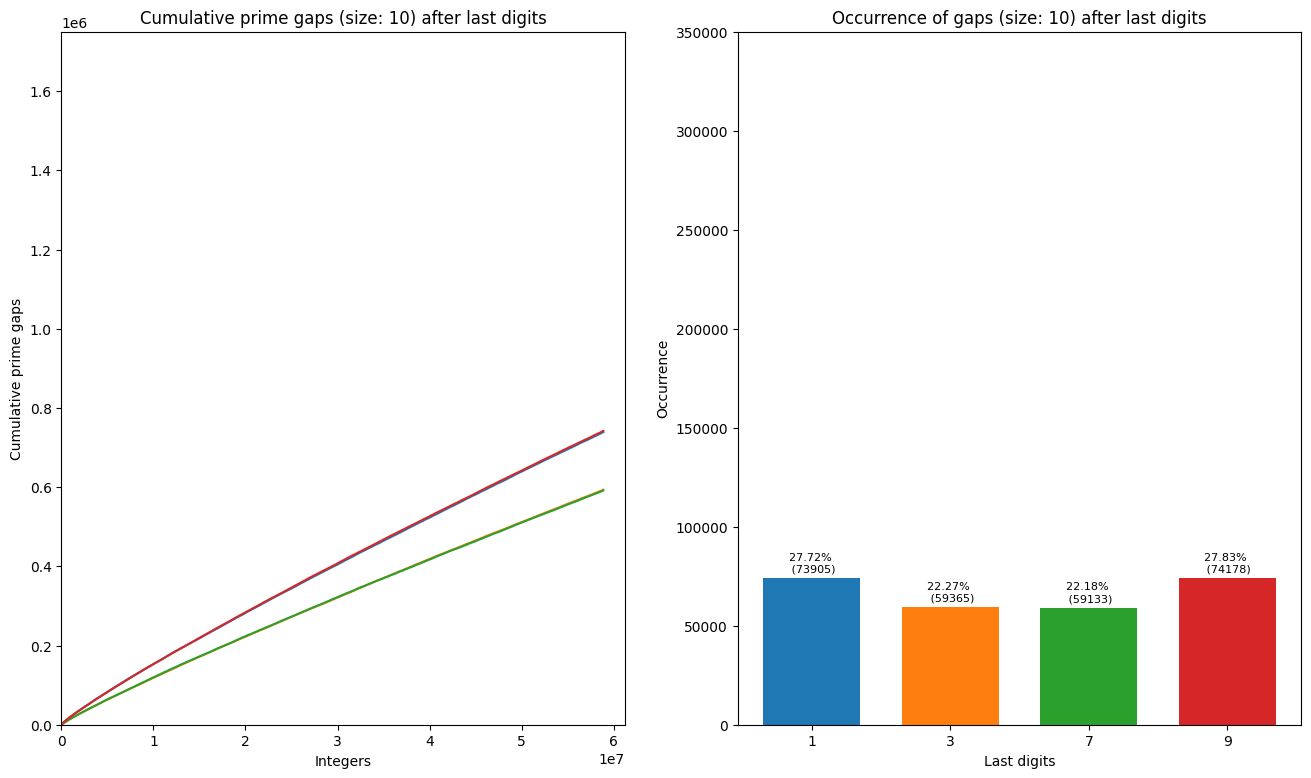My question is related to this article by Oliver and Soundararajan (article about a bias in the distribution of the last digits of consecutive prime numbers).
After trying some python experimental researches on the prime gaps, I notice a bias in the gaps around each last digits {1,3,7,9}.
Could this bias be intrinsically linked to the bias found in the distribution of the last digits of consecutive prime numbers?
Experimental results
Here some experimental plot results up to the 3,500,000th prime number.
Two set-ups are calculated:
- Cumulative and average gaps
- Cumulative and occurence of particular gap size
1. Cumulative and average gaps
- 1.1 Cumulative/average prime gaps after last digits:
 + Cumulative/average prime gaps before last digits
+ Cumulative/average prime gaps before last digits
 + Cumulative/average prime gaps before last digits
+ Cumulative/average prime gaps before last digits
2. Cumulative and occurence of a particular gap size
3. Misc
- 3.1 Additional research on a waveform script of the sieve of Ératosthène, colored
colored by last digits:
 + plot 2
+ plot 2
The script is on colab.research and is ready to fork


